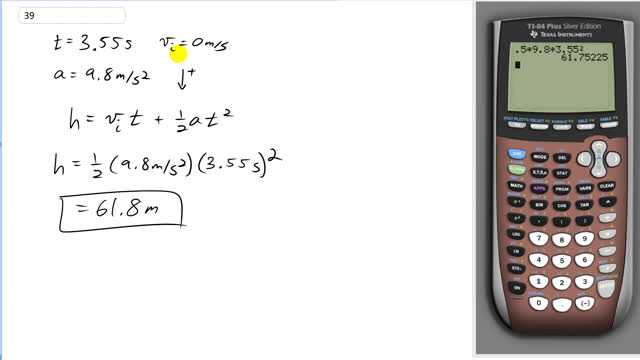
A stone is dropped from the top of a cliff. It is seen to hit the ground below after 3.55 s. How high is the cliff?

In order to watch this solution you need to have a subscription.
This is Giancoli Answers with Mr. Dychko. The time that the stone spends falling is 3.55 seconds; it's initial speed is zero and we'll take down to be positive in which case, the stone's acceleration is 9.8 meters per second squared. The height of the cliff then is given by this distance formula it's initial speed is zero so this term disappears and so we have the height is one-half times 9.8 meters per second squared times 3.55 seconds squared which is 61.8 meters; we have three significant figures because this 9.8 is a constant and well we could have more figures in it if we wanted but usually with constants, you assume they have lots of significant figures. in which case, just these other numbers here given determine your precision in your answer.
If for instance we considered down not to be positive and ended up with a negative. Does this essentially make the answer wrong?
Hi Icbishop, thanks for the question. It's fine to choose the coordinate system you prefer (such as up as positive, which is conventional), and this will result in a correct calculation regardless of which choice you made, but you need to be aware of what the question is asking for. In this case the question is asking for the height of the cliff. Heights are always positive. They're a magnitude. This means that regardless of whether your calculation results in a positive or negative, you would give a positive as your final answer. The calculation gives you the displacement of the stone, but "displacement of the stone" is not what the question is asking for. The cliff height is the magnitude of the stone's displacement, which is to say the "absolute value", which are two fancy ways of saying "make it positive".
Hope that helps,
Mr. Dychko
I am confused why is h being used? My version of the textbook uses x for the kinematic equations.